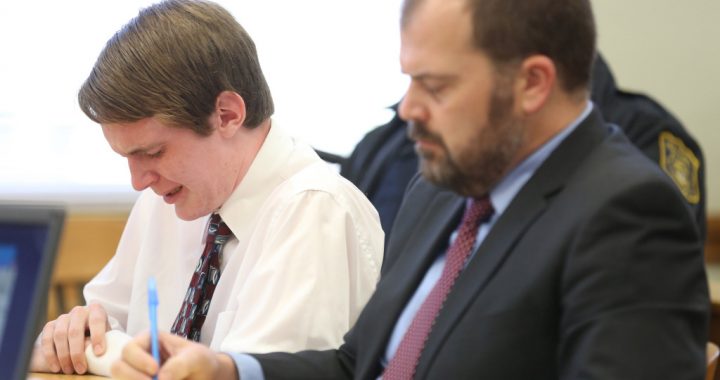Paragraph 11 reads: “Starr attempted suicide last
summer. Medication and counseling followed. He returned to work a month later.”
Paragraph 16
reads: “Scott had shot himself hours earlier, at home in Virginia Beach.
He died within a few miles of base – yet word of his death came
to Greene from someone thousands of miles away.”
http://hamptonroads.com/2009/09/walk-brings-light-dark-subject-suicide-military
Walk brings light to dark subject of suicide in the
military
Posted to: Military
The Virginian-Pilot
© September 11, 2009
Jon Greene
knows he might choke up when he reads aloud a certain name Saturday at
Mount Trashmore.
He lost Scott Alan Starr, a friend and colleague, to
suicide in August 2008. Greene was the commander of the Naval Surface Warfare
Center at Dam Neck; Starr worked closely with him.
Greene and other
volunteers will read the names of more than 100 people who took their own lives
in the past year as part of the Out of the Darkness Community Walk.
The
walk, in its fourth year, brings together scores of people – more than 900 have
registered so far – and is one of the largest of its kind in the United States.
It’s sponsored by the Hampton Roads Survivors of Suicide Support
Group.
Some walk in memory of a friend or loved one. Others come because
they know what it’s like to suffer from depression.
“I can’t save Scott,
but I think there are lots and lots of folks in the military with lots and lots
to offer the world… who don’t realize that depression can be treated,” Greene
said.
Diagnosable depression is a factor in 90 percent of all suicides,
according to Chris Gilchrist, a Chesapeake social worker and one of the event’s
organizers.
Starr was the model Navy chief petty officer, Greene said:
strong, intelligent, well-respected, caring. A father figure to hundreds of
young sailors.
He first worked for Greene as senior enlisted adviser at
the surface warfare center. After retiring in 2007, Starr returned to Dam Neck
as a civilian employee.
“He was very proud,” Greene said. “And very
private.”
Starr attempted suicide last summer. Medication and counseling
followed. He returned to work a month later.
When Greene checked on him,
Starr’s response was always the same: “I’m doing great,” he would
say.
“He was the master chief. He was in charge; he was in control. There
were no cracks in his facade,” Greene said.
Greene set up automatic
reminders on his computer so he wouldn’t forget to check in with Starr. One of
them popped up on Aug. 17. But the day got busy, and Greene didn’t get to
it.
In his office early the next morning, Greene’s phone rang. It was a
friend of Starr’s calling from Iraq.
Scott had shot himself hours
earlier, at home in Virginia Beach. He died within a few miles of base – yet
word of his death came to Greene from someone thousands of miles away.
“I
really didn’t believe it,” Greene said in a recent interview, pausing and
looking up at the ceiling, trying to remember the moment. “It was absolutely
surreal.”
After getting the news, Greene shifted into “commanding officer
mode.” There were arrangements to deal with, colleagues to tell, a memorial
service to plan. The rituals helped. But Greene was unsettled. He couldn’t help
feeling that the military standard of suffering without complaint might have
doomed his friend.
Gilchrist and Greene’s wife, also a social worker,
helped him understand that suicide is a medical matter, not a moral
one.
Gilchrist noted that suicide is a major medical issue – 32,000
people take their own lives annually, she said. It is the 11th leading cause of
the death in the United States.
After years of war, the military has
gotten better at teaching service members about post-traumatic stress disorder
and mental health.
Generals and admirals talk about the spike in suicides
and are trying to address it. Earlier this year, the Army ordered a massive
safety stand-down to reach out to soldiers. The Navy has its own program for
spreading the message that it’s OK to ask for help.
But Greene, who’s now
retired from the Navy, knows that rank-and-file sailors don’t always buy the
message mouthed by military brass at the Pentagon.
“There are a lot of
good things going on in the military. I think there’s a willingness to do
something,” Greene said. “But fundamentally, it comes to the
culture.”
And that culture is action-oriented, goal-driven and full of
people who think “I’ll just power through this. I can hack it,” he
said.
“There are a lot of folks in the military – including some
relatively senior folks – who still see suicide and depression as a shameful
choice. I think there needs to be recognition by a lot of folks, specifically
the leadership, that you can’t hack it. Sometimes you need a little
help.”
Starr expected himself to be perfect. “He felt he had to live at
this ideal, this standard he’d set for himself,” Greene said.
That’s part
of the reason Greene invited Gilchrist to talk about suicide with leaders at the
surface warfare center. And it’s part of the reason he put up a large sign on
base, publicizing Saturday’s walk.
“There are so many people worried
about the damage that will be done to their career if they get help from
military medicine,” Greene said.
He acknowledged that there are
obstacles, but even within the military’s constraints, there are resources, like
special hot lines for service members and their families where they can get
immediate help.
“People in the military are put in extremely stressful
and dangerous positions,” he said. “That’s not going to change, and we don’t
want it to change. It’s the responsibility of leadership to listen and beware
when their sailors are having trouble.”
Kate Wiltrout, (757) 446-2629,




